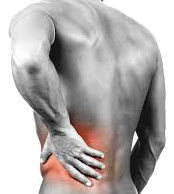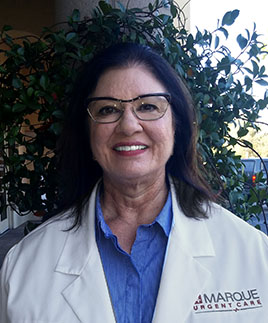Low back p
A common cause of low back pain is generally due to a sprain or strain. A strain occurs when a muscle or tendon is pulled or torn, causing pain and inflammation. Overstressing a muscle or improper lifting or twisting is the usual suspect in acute strain. Chronic strain, lasting longer than 3 months, may result from long-term overuse or repetitive motion of your low back. A fall, sudden twist, or blow to the body can stretch or tear a ligament resulting in a sprain.
Symptoms of strain or sprain are similar and can include pain ranging from a dull ache to a stabbing sensation made worse with movement. You may have decreased mobility and functionality, such as trouble sitting, standing, bending or twisting.
Severe back pain after a fall or injury should be checked out by a health care professional.
- Pain that radiates down past the knee,
- Pain that radiates out to the front of your body,
- Weakness and/or numbness in your lower extremities,
- Loss of bladder/bowel control,
- Symptoms such as fever and chills may indicate a non-orthopedic cause for your back pain such as kidney or pancreatic infection or disease.
To help your doctor diagnose the origin of your low back pain, be as specific as you can in describing the type of pain. Let them know details such as, when your pain started, if you have any other related symptoms, and if you have had previous history of back injury or chronic back conditions.
Both sprains and strains can be treated conservatively with anti-inflammatories like Ibuprofen or acetaminophen. In the first 24 to 48 hours, use ice on your back to reduce pain and inflammation. After 48 hours, alternate icing the area with the application of a heating pad or taking warm baths. Pain relieving creams or patches can also be helpful.
You should return to normal activities as soon as possible, (avoid heavy lifting or twisting). Staying in bed beyond the first one or two days post-injury is not recommended and has been shown to prolong symptoms and slow down the recovery process. Get up and move! Stretching, walking, physical therapies have great benefits.
Those at a higher risk for developing low back pain tend to be overweight, are inactive, have physically demanding jobs with heavy lifting and those who play sports or do exercises that involve pushing, pulling and twisting, such as weightlifting, football or golf. Most people first experience low back pain when in their 30s, and the chance of reoccurrence increases with age.
Steps to take to improve your back health and prevent injury include:
- Regular exercise to keep your back strong and increase your core stability;
- Maintaining a healthy weight to avoid excess stress on your low back;
- Good posture while standing and sitting to prevent back fatigue;
- Correct lifting techniques to protect from injury;
- Balanced nutrition will help in managing your weight, weight while also providing vitamins and minerals that promote bone strength.
The information provided is for general interest only and should not be misconstrued as a diagnosis, prognosis or treatment recommendation. This information does not in any way constitute the practice of medicine, or any other health care profession. Readers are directed to consult their health care provider regarding their specific health situation. Marque Medical is not liable for any action taken by a reader based upon this information.


